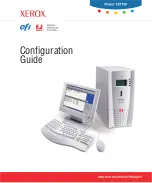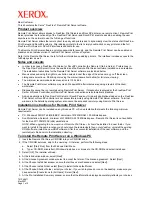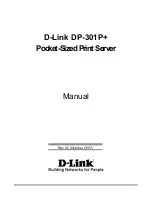
1. BitStorm 2400 Overview
1-6
December 2002
2400-A2-GB20-10
Downstream Traffic
In downstream traffic, frames with IEEE 802.1D priority code points of 4 to 7 are
directed to the high priority queue. Frames without IEEE 802.1Q tags and tagged
frames with priority codepoints of 0 to 3 are directed to the low priority queue.
The output frame schedulers on the BitStorm 2400 picks frames from the high
priority queue ahead of any frames on the low priority queue. The low priority
queue may overflow due to lack of servicing by giving preference to the high
priority queue. This may result in frame loss in the event of a high volume of high
priority frames. The loss of frames will be reported to the management platform.
Upstream Traffic
In upstream traffic, the EtherLoop StormPort CPE modems define high and low
priority output queues. Frames with IEEE 802.1D priority codepoints of 4 to 7
should be directed to the high priority queue. Frames without IEEE 802.1Q tags
and tagged frames with priority codepoints of 0 to 3 should be directed to the low
priority queue.
The output frame scheduler on the StormPort CPE picks frames from the high
priority queue ahead of any frames on the low priority queue. The low priority
queue may overflow due to lack of servicing by giving preference to the high
priority queue. This may result in frame loss in the event of a high volume of high
priority frames. The loss of frames is reported to the management platform.
Additionally, there is a setting in the VLAN/GVRP Port Configuration screen of the
web interface that allows you to set priority for untagged frames. The default is 0,
but can be changed if necessary.
VLAN Support
VLAN was introduced to control traffic flows on a physical network. A VLAN
defines a group of systems connected into a logical broadcast domain. This
reduces overall LAN traffic and improves security. A VLAN can be created to serve
any purpose. The BitStorm 2400 system will implement VLAN mechanisms that
support the IEEE 802.1Q specification.
Virtual LANs (VLANs) have been widely accepted and implemented in Ethernet
networks as a means to control everything from broadcast storms to security
issues to quality of service parameters and many other creative uses.
In its simplest form, VLAN support is a way to partition a switch or multiport router
such that it creates two or more broadcast domains. Generally users and devices
within a broadcast domain or VLAN may communicate freely with each other.
Communication across VLANs is enabled and controlled via a router or layer 3
switch.
Historically, VLAN capabilities were developed by individual switch and router
manufacturers and served the needs of only a specific class of devices from that
manufacturer. In recent years, the IEEE has standardized VLAN implementations
to enable a more consistent approach to VLAN mechanisms and to enable
interoperability among various components and equipment from different
manufacturers.
Summary of Contents for BitStorm 2400
Page 1: ...BitStorm 2400 User s Guide Document No 2400 A2 GB20 10 December 2002...
Page 10: ...About This Guide viii December 2002 2400 A2 GB20 10...
Page 42: ...3 Using the Asynchronous Terminal Interface 3 14 December 2002 2400 A2 GB20 10...
Page 70: ...4 Using the Web Interface 4 28 December 2002 2400 A2 GB20 10...
Page 86: ...C MIB Support C 12 December 2002 2400 A2 GB20 10...
















































